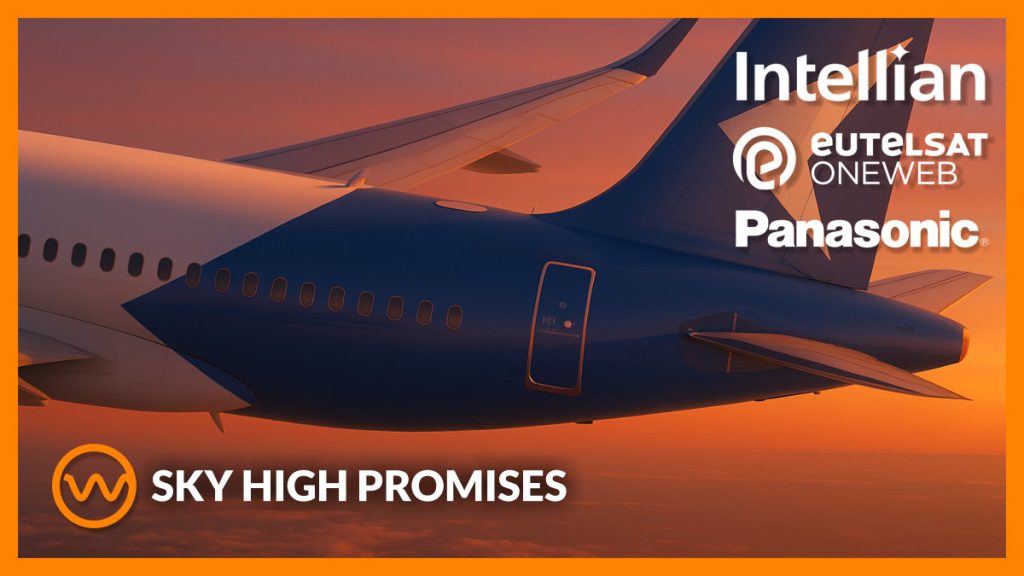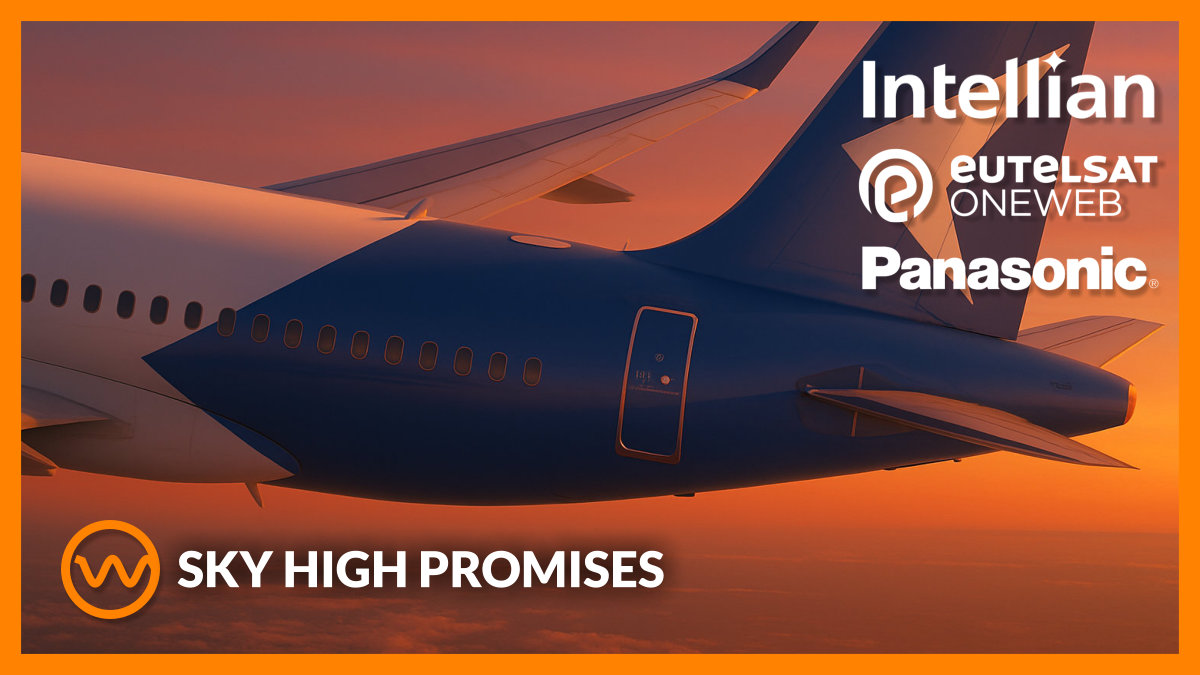ORBITAL WHISPERS

TL;DR
The in-flight Wi-Fi upgrade parade has a new float: Panasonic and Intellian’s LEO-only terminal, backed by Eutelsat’s OneWeb. It’s faster, lighter, and supposedly greener, but the real story is corporate positioning.
Panasonic clings to its multi-orbit dominance, Intellian breaks into aviation, and Eutelsat desperately needs OneWeb to look indispensable.
Airlines are sold the dream of overnight installs and higher passenger loyalty, while the timing conveniently pushes delivery to 2026.

Sky High Promises
How Panasonic, Intellian, and Eutelsat Are Selling Wi-Fi as the New Jet Fuel
Jean-François Fallacher, the newly vocal front man at Eutelsat Group, is very proud of the fact that you’ll soon be able to doomscroll your inbox at 35,000 feet without hitting the dreaded “No Service” icon. His LinkedIn cheerleading for Panasonic Avionics and Intellian Technologies reads like a tech gospel, except the sermon is about monetizing the last dead zone left in your digital life: the airplane cabin.
The official line is predictable. Connectivity is no longer a luxury but a “core expectation.” Translation: airlines that don’t pay up will look like flying relics, and passengers will grumble that they can’t post a selfie mid-Atlantic. Panasonic and Intellian are packaging their shiny new LEO-only aviation terminal as the cure to this modern misery, built to talk to Eutelsat’s OneWeb satellites with promises of 195 Mbps and latency under 100 milliseconds. The language is breathless about “future-proof” modularity, “overnight installs,” and “sustainability” from lighter equipment. Suddenly, high-speed Wi-Fi is a climate strategy. Brilliant marketing.
The subtext is sharper than the press release. Intellian is moving into aviation after years of dominance at sea and on land. Panasonic is working hard to be seen as orbit-agnostic, waving the flag for LEO but quietly locking in more GEO capacity with Eutelsat’s 10B satellite. That’s survival instinct dressed up as “flexibility.” And Eutelsat, having tied its identity to OneWeb, needs these headlines to convince airlines and investors that the constellation is an actual business backbone.
Timing is conveniently precise. OneWeb aviation services are already live, regulators like South Korea have given their thumbs up, and the retrofit rollout date of late 2026 is just far enough away to sound ambitious but not so close that anyone expects rapid results. Airlines are promised loyalty boosts, better net promoter scores, and magical new revenue streams once the Wi-Fi gods are appeased. The fact that every single airline has been burned before by oversold connectivity promises seems to be politely skipped.
Strip the corporate confetti away, and this is a calculated pitch to lock airlines into a multi-orbit future before competitors (yes, Starlink, we see you lurking) grab the contracts. The playbook is obvious: shout about speed and low latency, sprinkle in carbon-conscious buzzwords, and reassure executives that installation won’t ground their fleets. If passengers actually get Netflix quality in-flight, it’ll be the first time one of these promises has aged well.
This is an industry chess move. Panasonic wants to stay the indispensable middleman. Intellian wants to muscle into the sky. Eutelsat wants OneWeb to be taken seriously. And airlines? They’re being told that unless they buy into this vision, they’ll look like dinosaurs coasting at altitude while competitors brag about passengers streaming TikTok uninterrupted over the Atlantic.
Comments

Restricted Content
This content is sealed tighter than a procurement meeting on Friday at 4 p.m. To get in, you’ll need clearance, ideally accompanied by a badge, a budget code, and the ability to nod through three acronyms you don’t understand.
Push the button. You know you want to.
Or don’t. We’re not here to tell you how to live.


Join the discussion
Please log in to comment.